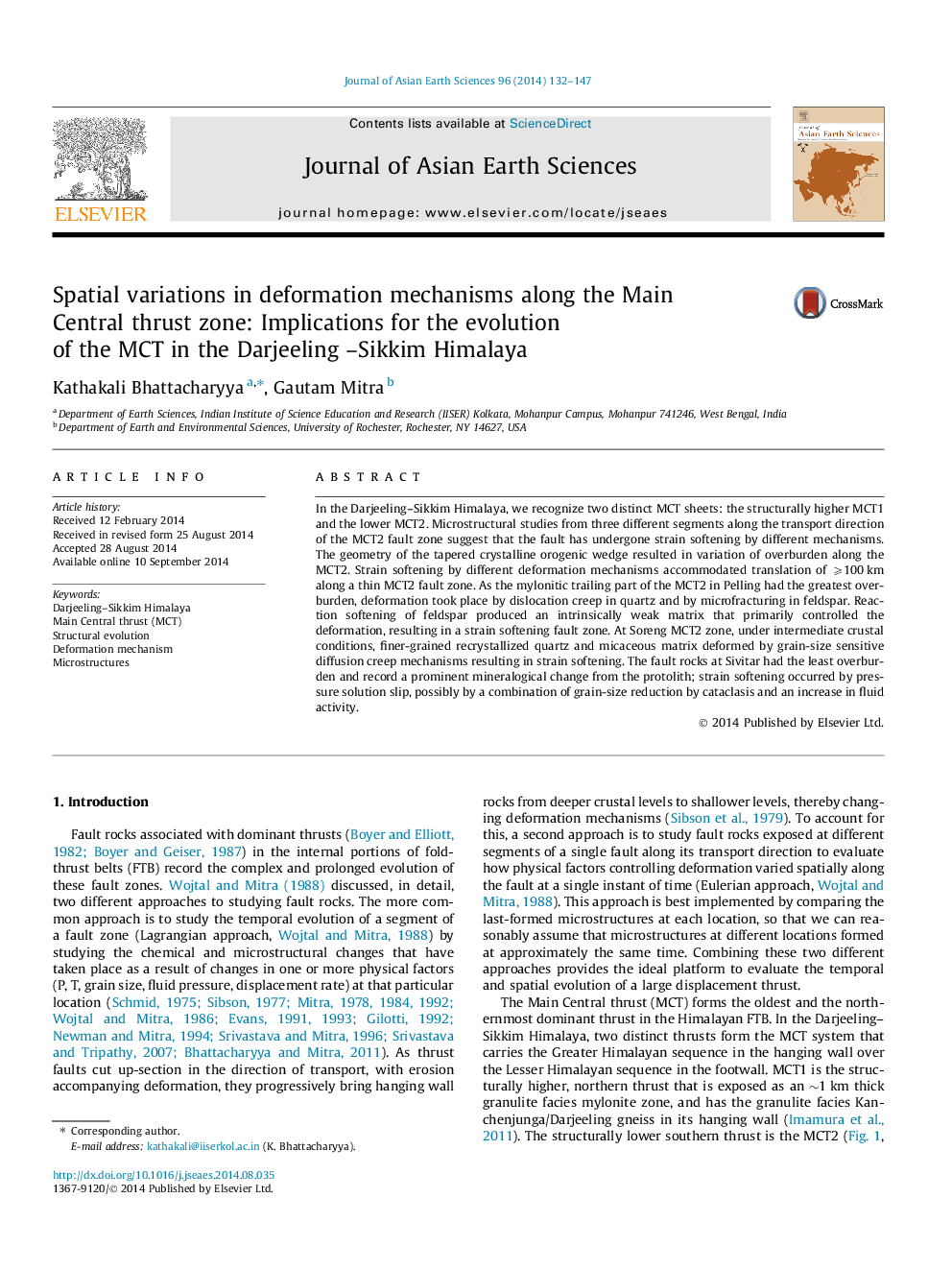| Article ID | Journal | Published Year | Pages | File Type |
|---|---|---|---|---|
| 6444303 | Journal of Asian Earth Sciences | 2014 | 16 Pages |
Abstract
In the Darjeeling-Sikkim Himalaya, we recognize two distinct MCT sheets: the structurally higher MCT1 and the lower MCT2. Microstructural studies from three different segments along the transport direction of the MCT2 fault zone suggest that the fault has undergone strain softening by different mechanisms. The geometry of the tapered crystalline orogenic wedge resulted in variation of overburden along the MCT2. Strain softening by different deformation mechanisms accommodated translation of ⩾100 km along a thin MCT2 fault zone. As the mylonitic trailing part of the MCT2 in Pelling had the greatest overburden, deformation took place by dislocation creep in quartz and by microfracturing in feldspar. Reaction softening of feldspar produced an intrinsically weak matrix that primarily controlled the deformation, resulting in a strain softening fault zone. At Soreng MCT2 zone, under intermediate crustal conditions, finer-grained recrystallized quartz and micaceous matrix deformed by grain-size sensitive diffusion creep mechanisms resulting in strain softening. The fault rocks at Sivitar had the least overburden and record a prominent mineralogical change from the protolith; strain softening occurred by pressure solution slip, possibly by a combination of grain-size reduction by cataclasis and an increase in fluid activity.
Related Topics
Physical Sciences and Engineering
Earth and Planetary Sciences
Geology
Authors
Kathakali Bhattacharyya, Gautam Mitra,
